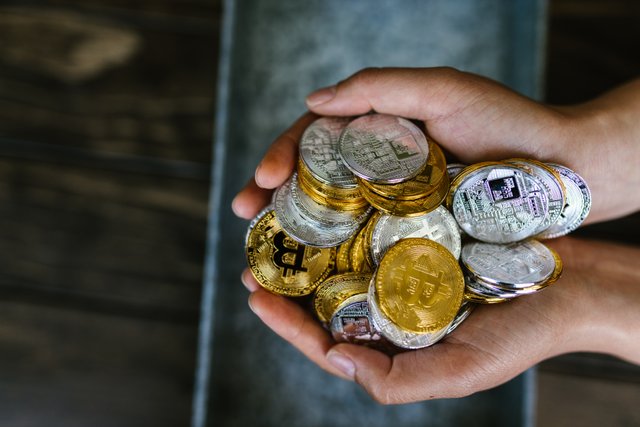
The talk from the town during the last few months has been in existence digital or “crypto-collectibles”. One meaning of crypto-collectibles from Decentraland:
A crypto-collectible is really a cryptographically unique, non-fungible digital asset. Unlike cryptocurrencies, which require all tokens to become identical, each crypto-collectible token is different or limited in quantity.
Typically, crypto-collectibles are visualized as real-life objects like pets or avatars. Each token has variations in specific attributes there are limits to the amount of tokens that can be generated.
Exactly what does it mean for something to become “digitally scarce”?
The main reason why digital collectibles are even possible dates back to Bitcoin because it was the first one to establish that trust-less digital scarcity is achievable.
The reason why digital scarcity is really remarkable is simply that digital assets (that are just comprised of software code) tend towards abundance. While the price of replicating things within the physical world is high, the price of replicating things within the digital world is just a workout in typing “copy-paste”?-?just ask the song's labels.
“Trust-less digital scarcity” describes Bitcoin’s fixed supply (unchangeable and enforced by code) that is resistant to change, despite the motivations of the adversary or corporation that desires to change it. There’ll always be 21M bitcoin, a well-known fact we realize and may take comfort in.
As well as being “scarce”, Bitcoin is often referred to as fungible. Fungibility is referred to as:
the home of the good or perhaps a commodity whose individual units are essentially interchangeable
Fungibility and scarcity are a couple of the 5 properties frequently cited as properties of currencies. Gold is fungible?-?an ounce of pure gold is the same as every other ounce of pure gold. It’s also scarce, given there’s a hypothetically fixed amount that we need to pull from the ground.
Before Bitcoin, it had been impossible for all of us to learn that the digital asset was provably scarce in a trust-less way. Even though many games online and sites tried to provide an in-house currency, the availability, and control over these digital assets were at the whim of the company issuing them. That they had the opportunity to remove or modify your ownership at any time over time.
How can we move from Bitcoin to crypto-collectibles?
Here’s how fungibility pertains to collectibles: brand new baseballs are fungible (effectively interchangeable) until the first is signed by Babe Ruth, after which it will become a distinctive collectible.
A fungible, scarce digital token that you could share with others has high utility as a currency. However, within the collectible context, what happens if we held much of the identical properties but rather tagged tokens with unique identifiers (metadata, for your nerds) to ensure that we might differentiate between two tokens of the identical kind? Fungible tokens are identical blank canvases, whereas non-fungible tokens would be the Picassos, Van Goghs, and Rembrandts.
The basic answer is that you simply get non-fungible tokens (a.k.a. NFTs), a far more technical buzzword some individuals use to explain crypto-collectibles.
While there have been many previous methods to creating digital collectibles, e.g. Rare Pepe cards built on the top of Counterparty’s blockchain, not one of them caught up with a mainstream audience.
The very first non-fungible token to capture significant attention was the CryptoKitties project, which launched on November 28th, 2017. It seized everyone’s imagination and huge amounts of money while almost bringing along the Ethereum blockchain along the way.
Individuals have spent over $1M buying virtual cats around the Ethereum blockchain
Launched a couple of days ago, CryptoKitties is basically as an digital version of Pokemon cards but according to the…techcrunch.com
As the project received criticism because of its perceived uselessness, CryptoKitties was among the first non-currency use cases of blockchains to get mainstream adoption. It got here by using gorgeous design, a simple-to-use interface, and adorable kittens.
Exactly why are CryptoKitties tokens distinct from ether or bitcoin?
Because they’re cute and special, duh! CryptoKitties had several unique qualities that distinguished them off their tokens built around the Ethereum blockchain:
•CryptoKitties might have mixtures of several properties (age, breed, color, etc.) that made each token unique (and often valuable!). This made them non-fungible, just like anyone CryptoKitty token couldn’t be swapped as comparable to another.
•CryptoKitties were indivisible consequently. As you can divide bitcoin or ether by infinite amounts, it doesn’t make much sense to divide your CryptoKitty token. Poor kitty!
After launching, users spent huge amounts of money acquiring virtual kitties, with a few particularly special kittens opting for thousands and thousands of dollars. The marketplace for these unique kitties was big that community-built auction boards and kitty genome classifiers were made. The kitty markets were very popular that at some point they clogged the Ethereum blockchain to the level that breeding fees have been doubled.
Exactly what does this indicate for the creation of other collectibles? ??
Where can we move from here?
Because of the launch of CryptoKitties, countless non-fungible tokens have started development. Of those, among my personal favorite examples is Decentraland.
Decentraland is really a virtual reality platform powered by the Ethereum blockchain. Users can make, experience, and monetize content and applications
In contrast to existing virtual reality worlds, Decentraland is creating a fully decentralized virtual reality universe that’s wholly belonging to users. Within this process, they’re making heavy utilization of the non-fungible from designing in-world games to selling plenty of virtual lands.
Why Decentraland Is Fighting Back Against Centralized VR Worlds
While Decentraland is exploring an extraordinarily ambitious, utopian vision, it won’t be a long time before real-world assets are represented and traded via non-fungible tokens. This virtual representation has already been being produced for art and hard assets as the common style of these tokens allow for quick trading and shared liquidity: RareBits has made a market for several unique digital collectibles.
Even though many digitally-native tokens may be fads, this isn’t too distinctive from other (non-digital) collectibles. Cultural value allotted to pure collectibles will fluctuate however with future adoption of non-fungible tokens in traditional games and new kinds of assets being represented as NFTs, I anticipate that the growth and development of “crypto-collectibles” will continue being impactful moving forward.
Tired of losing money in crypto?
We are introducing a solution: The Crypto Guide.
Crypto is a huge opportunity, do not leave it after losing a few bucks. You make money when someone else loses. Do not be this “someone else” anymore. Get started with the crypto guide and safeguard your crypto journey to the moon with us. Feel the change.

Click here: tinyurl dot com/mv3dcc4 ((COPY AND PASTE THIS IN A NEW TAB AND REMOVE dot WITH ACTUAL . )